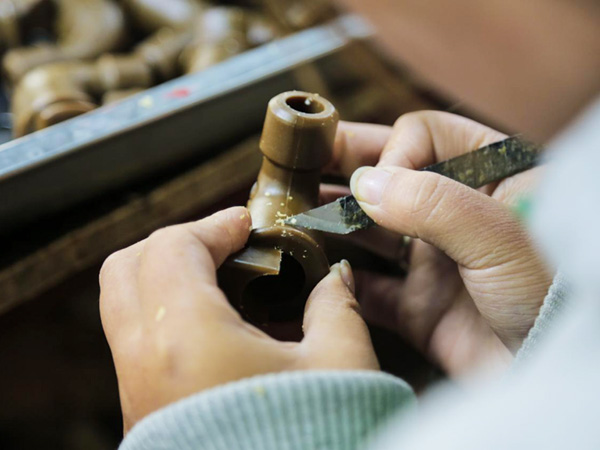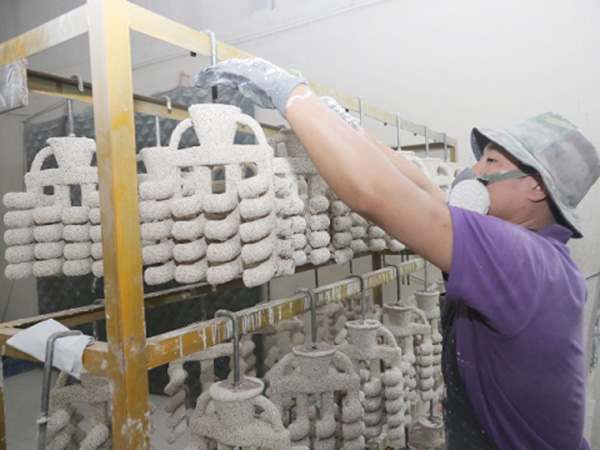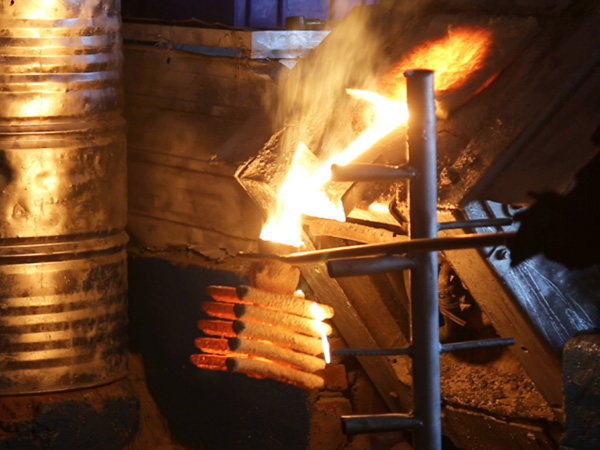Investment casting is also called lost wax casting or precision casting, which is a metal forming method to produce parts with tight tolerances, complex inner cavities and precise dimensions.
Investment casting is a manufacturing process in which a wax pattern is coated with a refractory ceramic material. Once the ceramic material is hardened its internal geometry takes the shape of the casting. The wax is melted out and molten metal is poured into the cavity where the wax pattern was. The metal solidifies within the ceramic mold and then the metal casting is broken out. This manufacturing technique is also known as the lost wax process. Investment casting was developed dating back thousands of years ago and can trace its roots back to both ancient Egypt and China.
The main processes are as followings:

Pattern creation - The wax patterns are typically injection molded into a metal die and are formed as one piece. Cores may be used to form any internal features on the pattern. Several of these patterns are attached to a central wax gating system (sprue, runners, and risers), to form a tree-like assembly. The gating system forms the channels through which the molten metal will flow to the mold cavity.


Mold creation - This "pattern tree" is dipped into a slurry of fine ceramic particles, coated with more coarse particles, and then dried to form a ceramic shell around the patterns and gating system. This process is repeated until the shell is thick enough to withstand the molten metal it will encounter. The shell is then placed into an oven and the wax is melted out leaving a hollow ceramic shell that acts as a one-piece mold, hence the name "lost wax" casting.
Pouring - The mold is preheated in a furnace to approximately 1000°C (1832°F) and the molten metal is poured from a ladle into the gating system of the mold, filling the mold cavity. Pouring is typically achieved manually under the force of gravity, but other methods such as vacuum or pressure are sometimes used.


Cooling - After the mold has been filled, the molten metal is allowed to cool and solidify into the shape of the final casting. Cooling time depends on the thickness of the part, thickness of the mold, and the material used.
Casting removal - After the molten metal has cooled, the mold can be broken and the casting removed. The ceramic mold is typically broken using water jets, but several other methods exist. Once removed, the parts are separated from the gating system by either sawing or cold breaking (using liquid nitrogen).
Finishing - Often times, finishing operations such as grinding or sandblasting are used to smooth the part at the gates. Heat treatment is also sometimes used to harden the final part.
Anping Kaixuan Stainless Steel Products Co., Ltd
Email: emily@quickcoupling.net.cn
Web: www.hbkaixuan.com
Factoty: No.17 East industrial zone, Anping county, Hebei province, 053600, China
Post time: Sep-21-2020
